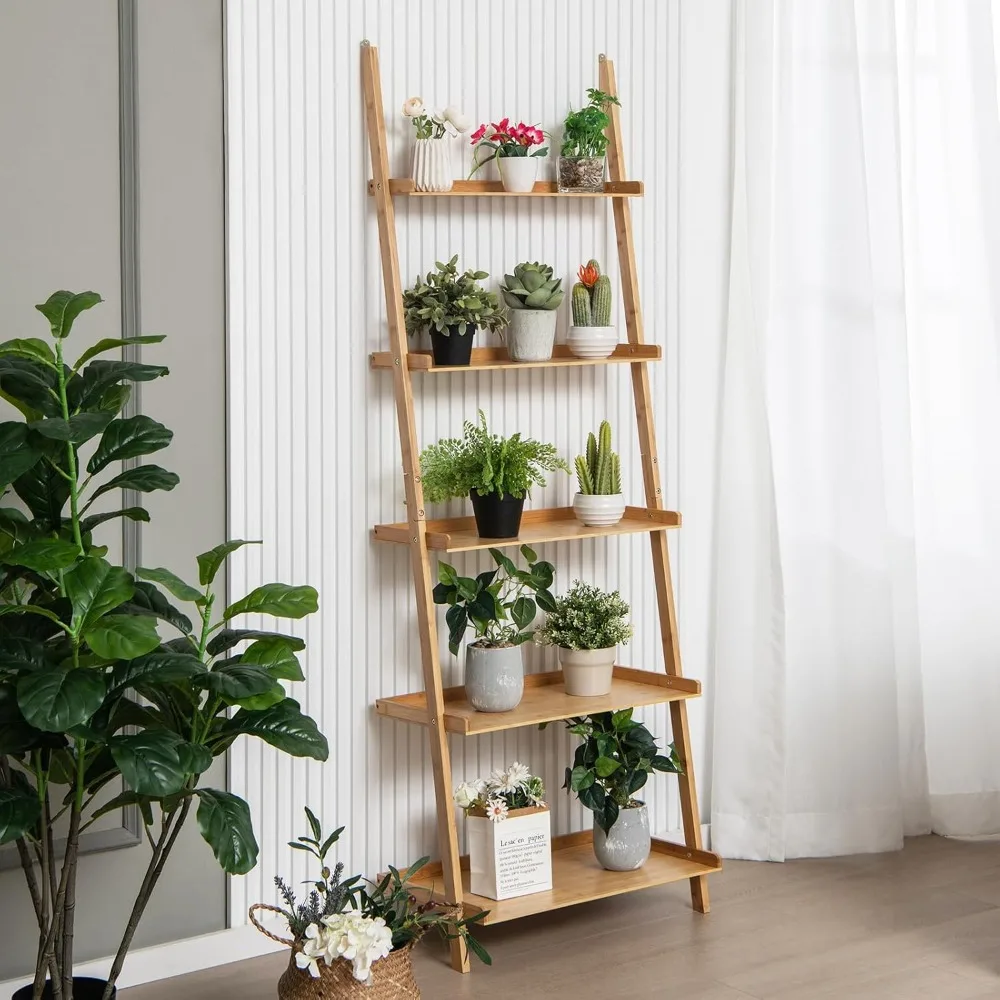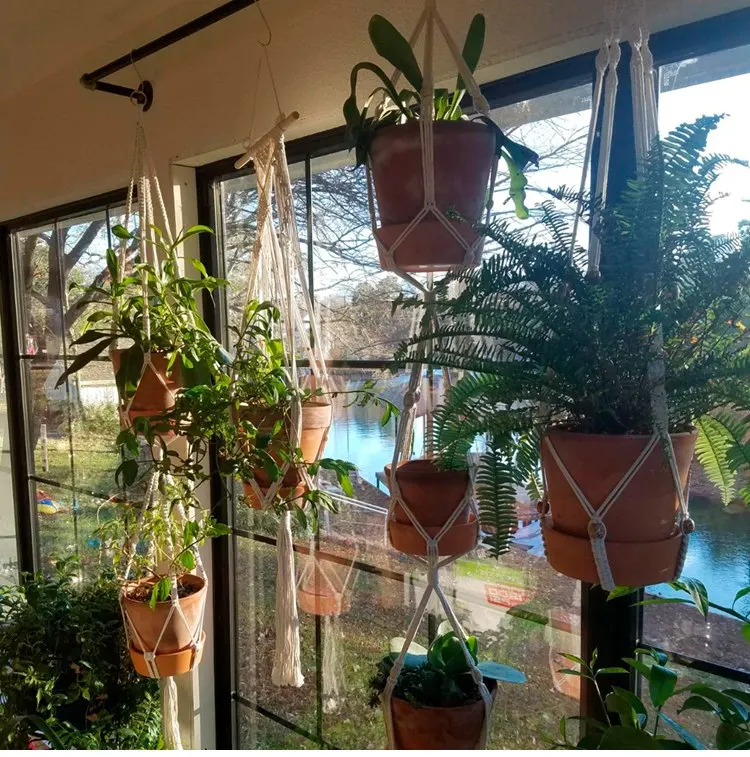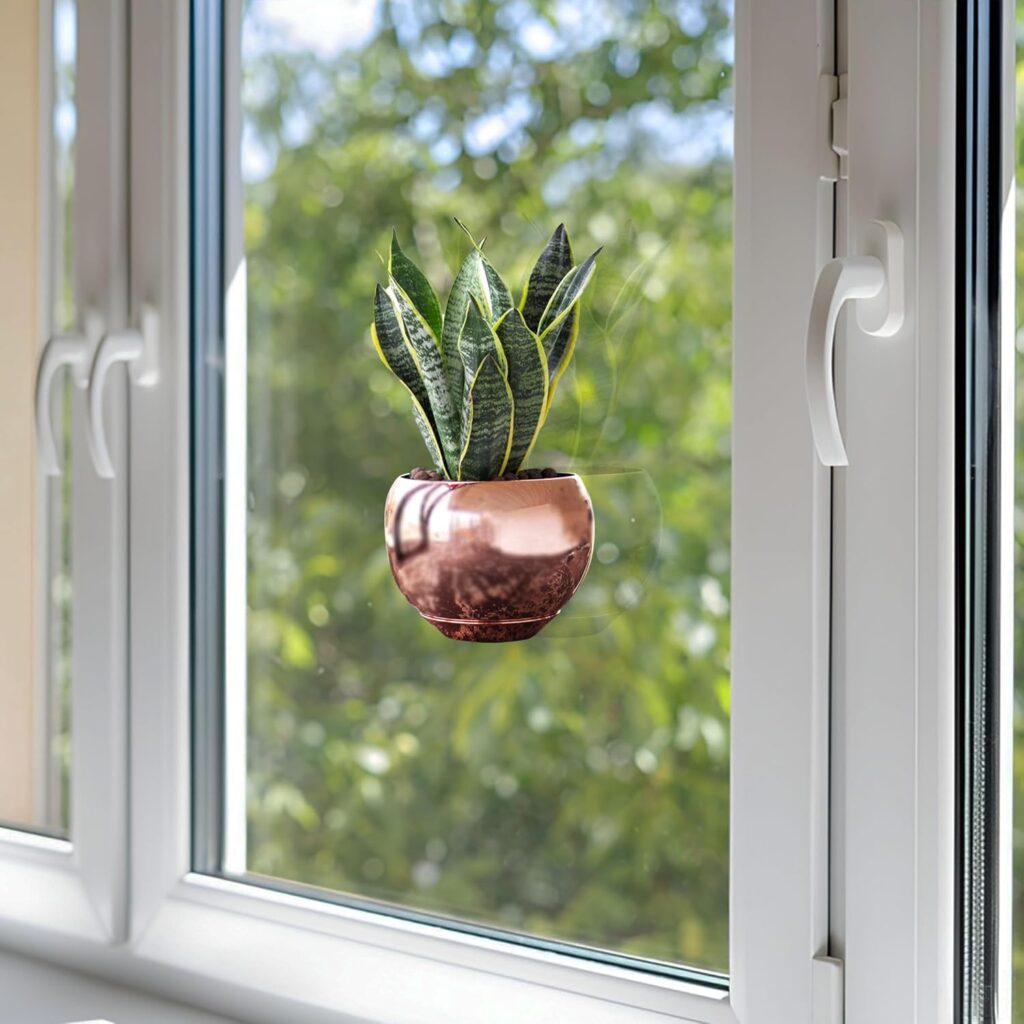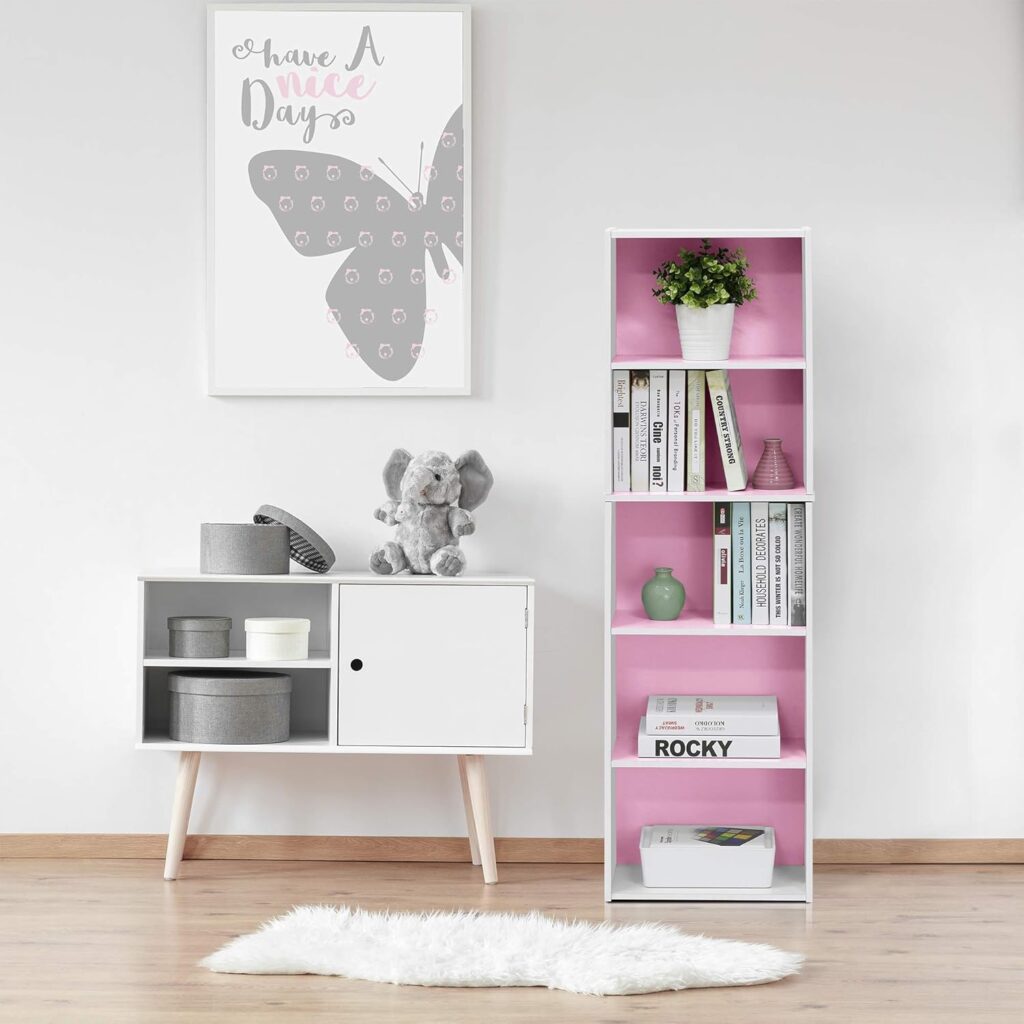Hidden Potential: 8 Sneaky Plant Stand Ideas for Small Spaces
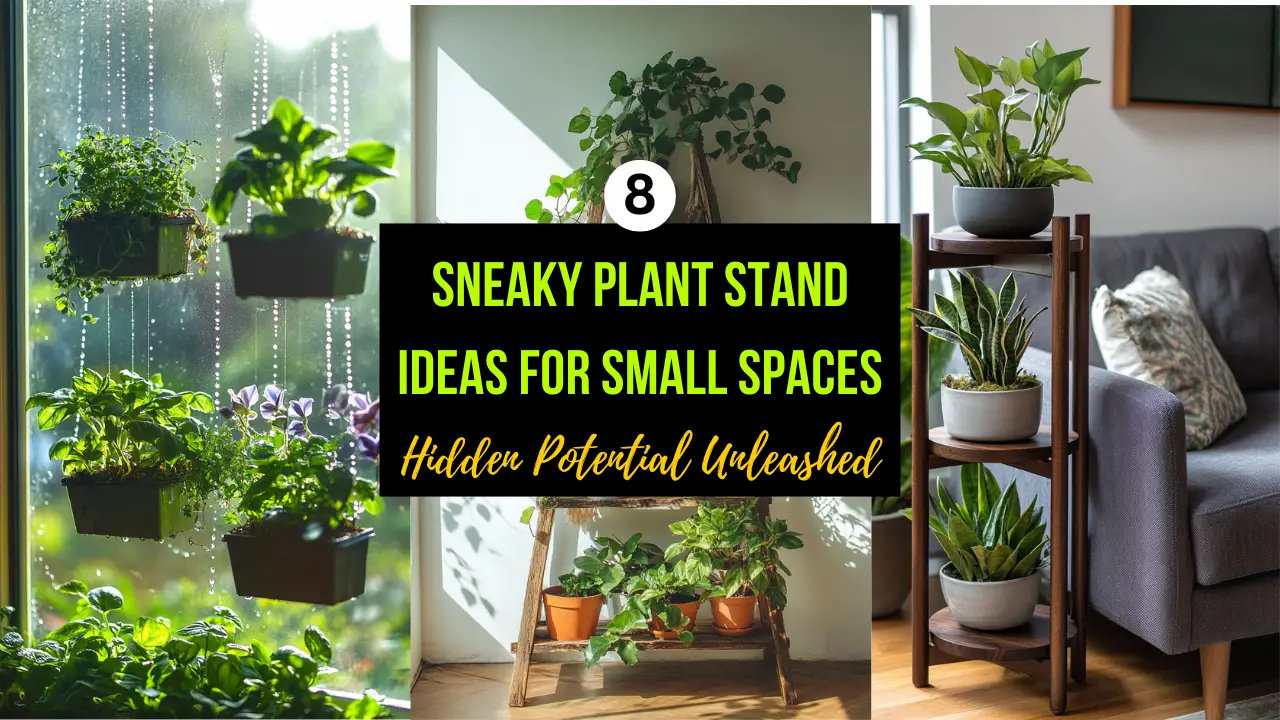
Living in small spaces often means sacrificing greenery, but it doesn’t have to be that way.
Plant lovers can still cultivate their passion in compact areas with a bit of creativity.
In this post we’ll explore 8 unconventional plant stand solutions that make the most of limited space.
From vertical designs to multi-functional pieces, these ideas transform overlooked nooks into thriving indoor gardens.
These innovative approaches will revolutionize how you display your beloved plants, proving that size isn’t a barrier to creating a lush oasis at home.
8 Sneaky Plant Stand Ideas
1. Over-the-Door Hanging Plant Stand
An over-the-door hanging plant stand is a space-saving marvel for plant enthusiasts.
It utilizes vertical space without taking up floor area, making it ideal for small apartments or offices.
This clever solution transforms unused door space into a lush display of greenery.
Best plants for this setup:
When selecting plants, opt for those that thrive in hanging conditions.
Pothos, spider plants, and strings of pearls are excellent choices.
These plants cascade beautifully and require minimal maintenance.
Ferns and air plants also work well in this setup, adding texture and interest to your vertical garden.
Consider the weight capacity of your door and stand when choosing plants and pots.
Lightweight plastic or fabric pots are preferable to heavy ceramic ones.
Ensure proper drainage to protect your door from water damage.
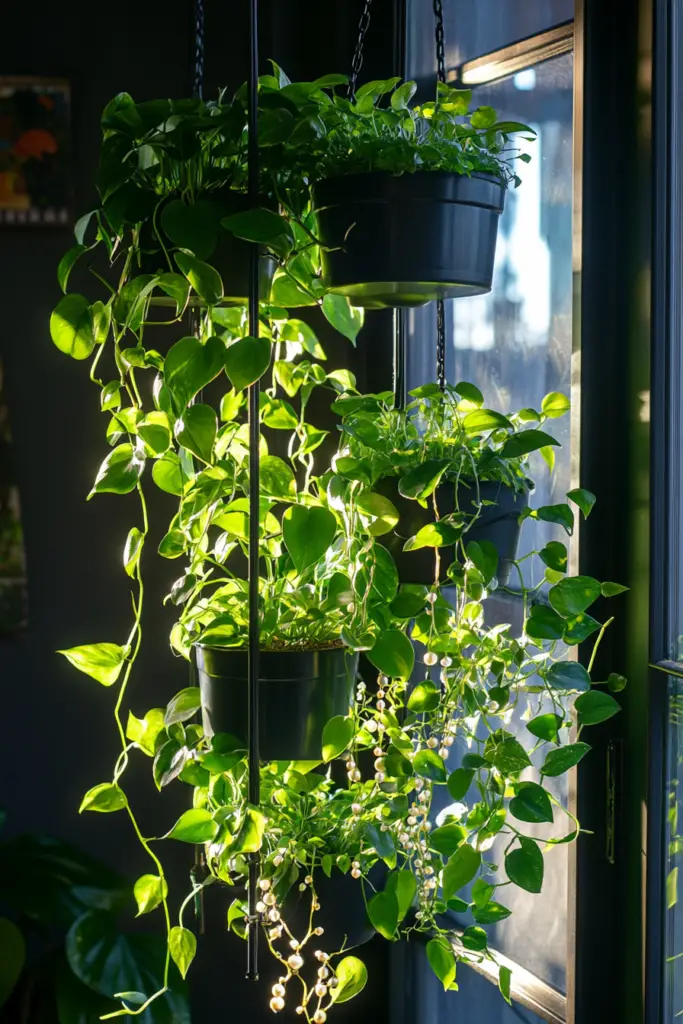
2. Floating Corner Shelves as Plant Stands
Floating corner shelves transform neglected corners into vibrant plant displays.
These versatile shelves maximize vertical space in small rooms.
Corner shelves offer a unique opportunity to create a green focal point without sacrificing floor area.
Installation tips:
Ensure proper support by using wall anchors and studs for mounting.
Measure and mark shelf positions carefully before drilling.
Use a level to guarantee straight installation.
Choose shelves with weight capacities suitable for your intended plants and pots.
Opt for moisture-resistant materials to prevent damage from plant watering.
Styling ideas for a cohesive look:
Arrange plants in varying heights to create visual interest.
Mix trailing plants with upright ones for a balanced appearance.
Incorporate different leaf shapes and textures to add depth to your display.
Use coordinating pot colors or materials to tie the look together.
Add small decorative objects between plants for a personalized touch.
Consider the overall color scheme of your room when selecting plants and pots.
Group plants with similar light and water needs for easier care.
Use the top shelf for a statement plant or a collection of smaller specimens.
Experiment with asymmetrical arrangements for a modern and dynamic look.
3. Repurposed Ladder Plant Stand
Transform discarded ladders into charming plant displays with minimal effort.
Wooden ladders offer rustic appeal, while metal ones provide an industrial edge.
Sand and paint old ladders to match your decor or leave them as-is for a vintage look.
This eco-friendly option gives new life to forgotten items while adding character to your space.
How to secure and style:
Ensure stability by anchoring the ladder to the wall if needed.
Add wooden planks across rungs to create wider shelves for pots.
Use S-hooks to hang smaller plants from the steps.
Incorporate macramé plant hangers for a boho touch.
Arrange plants in a cascading manner, with larger ones at the bottom and smaller ones at the top.
Ideal placement in small rooms:
Position the ladder in a corner to maximize vertical space.
Lean it against a wall near a window for optimal plant light exposure.
Use a ladder plant stand as a room divider in studio apartments.
Place it in a bathroom for a spa-like atmosphere with humidity-loving plants.
Utilize a small ladder in a home office to create a green, productivity-boosting environment.
4. Window-Mounted Suction Cup Planters
Window-mounted suction cup planters offer a clever solution for plant lovers with limited space.
These innovative planters attach directly to windows, utilizing vertical space efficiently.
They provide plants with optimal sunlight exposure, promoting healthy growth.
This setup creates a green curtain effect, enhancing privacy while beautifying your view.
Installation and maintenance tips:
Clean window surfaces thoroughly before attaching suction cups.
Apply planters to smooth, non-textured glass for best adhesion.
Check suction strength regularly to prevent accidents.
Remove planters periodically to clean the window and prevent mineral buildup.
Use lightweight potting mix to reduce strain on suction cups.
Install a catch tray beneath planters to protect floors from water damage.
Suitable plant types:
Choose compact, lightweight plants to avoid overburdening the suction cups.
Herbs like basil, mint, and chives thrive in these planters, offering fresh ingredients at arm’s reach.
Succulents and air plants are excellent low-maintenance options for this setup.
Small flowering plants such as African violets add color to your window display.
Trailing plants like a string of pearls create an attractive cascading effect.
Consider light requirements when selecting plants for different window orientations.
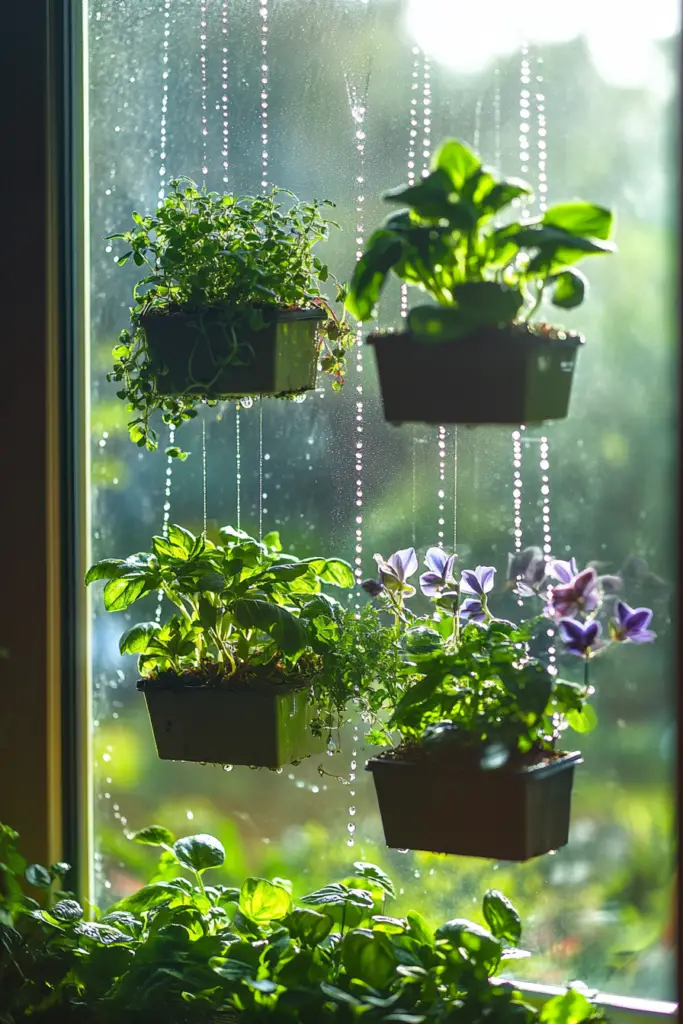
5. Ceiling-Suspended Plant Hanger
Ceiling-suspended plant hangers transform unused overhead space into a captivating green canopy.
This innovative approach draws the eye upward, adding depth to your room’s design.
Suspended plants create a lush, jungle-like atmosphere without cluttering floor space.
Varying the heights of hanging planters adds visual interest and dimension to your indoor garden.
Weight considerations and installation guide:
Assess your ceiling’s load-bearing capacity before installation.
Use sturdy anchors and mounting hardware rated for the combined weight of plants and planters.
Install hooks into ceiling joists for maximum support and safety.
Opt for lightweight materials like plastic or fiber pots to reduce overall weight.
Consider using a pulley system for easy watering and maintenance of high-hanging plants.
Ensure proper drainage to prevent water damage to floors and furniture below.
Best trailing plants for this setup:
A string of pearls offers delicate, bead-like foliage that cascades beautifully.
Pothos varieties thrive in hanging positions and grow impressive trailing vines.
Spider plants produce numerous offspring, creating a full, flowing appearance.
Burro’s tail succulents form striking, rope-like stems perfect for vertical displays.
English ivy adds a classic, elegant touch to any suspended planter arrangement.
Air plants require minimal soil, making them ideal for creative hanging displays.
6. Magnetic Wall Planters
Magnetic wall planters transform ordinary metal surfaces into living art installations.
These innovative planters adhere to refrigerators, metal cabinets, or specially prepared walls.
They offer a space-saving solution for urban dwellers with limited floor space.
Magnetic planters allow for easy rearrangement, keeping your green display fresh and dynamic.
Creative arrangements and patterns:
Create geometric shapes by arranging planters in triangles or hexagons.
Spell out words or initials using a cluster of magnetic planters.
Design an abstract pattern that complements your room’s aesthetic.
Combine planters of different sizes for a visually interesting composition.
Use contrasting plant colors to form a living mosaic on your wall.
Arrange planters to mimic natural growth patterns for an organic look.
Plant options for magnetic planters:
Air plants thrive in magnetic planters due to their low maintenance needs.
Small succulents add texture and require minimal watering.
Herbs like basil or mint grow well and offer practical benefits.
Miniature ferns bring a touch of woodland charm to your metal surface.
Colorful bromeliads make striking focal points in magnetic displays.
Trailing plants such as string of pearls create an eye-catching cascading effect.
Consider lightweight plants to prevent overloading the magnets’ strength.
7. Behind-the-Couch Slim Plant Stand
Behind-the-couch slim plant stands to maximize often-overlooked narrow spaces.
These innovative stands transform dead zones into vibrant green displays.
They add depth to your room without disrupting the existing layout.
Slim plant stands create a natural barrier between furniture and walls, enhancing room aesthetics.
Design ideas for seamless integration:
Choose stands with a finish matching your couch or wall color for a cohesive look.
Opt for tiered designs to showcase multiple plants at varying heights.
Consider stands with built-in LED lighting for added ambiance and plant health.
Use stands with adjustable widths to fit perfectly in your specific space.
Select curved or angled stands to fit snugly in corners behind L-shaped sofas.
Plants that thrive in lower light conditions:
Snake plants tolerate low light and add striking vertical elements.
ZZ plants offer glossy, dark green foliage and exceptional durability.
Chinese evergreens bring a color variety with their patterned leaves.
Cast iron plants live up to their name with remarkable resilience in the shade.
Peace lilies purify the air and produce elegant white blooms even in dim areas.
Pothos vines cascade beautifully and adapt well to lower light levels.
Parlor palms add a tropical touch while thriving in shadier spots behind furniture.
8. Bookshelf Plant Nooks
Bookshelf plant nooks blend literature and nature in a space-saving design.
These green additions breathe life into static book displays.
Utilize empty shelf spaces to create mini gardens among your literary collection.
Transform ordinary bookshelves into dynamic, biophilic showcases.
Alternate book stacks with small potted plants for a rhythmic arrangement.
Use plants as natural bookends to add functionality to your green decor.
Create themed shelves where plant choices complement book genres.
Arrange books by color to complement or contrast with your plants’ foliage.
Use hanging plants to frame shelf edges without occupying valuable book space.
Position taller plants behind shorter book stacks for a layered look.
Tips for protecting books from moisture:
Place plants in leak-proof containers to prevent water damage.
Use pebble trays under pots to catch excess moisture.
Opt for plants with low watering needs to minimize humidity near books.
Install small fans to improve air circulation around plant-book combinations.
Choose glazed or plastic pots over porous materials to reduce moisture seepage.
Regularly inspect books and shelves for signs of dampness or mold.
Consider using decorative plant stands to elevate pots above book level.
Implement a careful watering routine to avoid overwatering and splashing.
Conclusion
These innovative solutions transform overlooked spaces into green havens.
From over-door hangers to magnetic planters, each idea maximizes limited space uniquely.
They prove that small areas can support thriving indoor gardens with creative thinking.
Your home holds untapped potential for plant displays in unexpected spots.
Look beyond traditional stands and pots.
Experiment with vertical, suspended, or integrated arrangements.
Let these ideas inspire you to reimagine your living area as a canvas for botanical innovation.
- 16 Funky Living Room Ideas to Bring Colors, Fun & Personality to Your Space - November 9, 2025
- 12 Small Bathroom Ideas on a Budget That Make Your Space Look Bigger & Stylish - November 6, 2025
- 20 Modern Boho Living Room Ideas That Are Cozy & Absolutely Stunning - November 2, 2025


